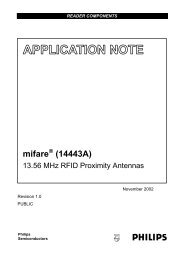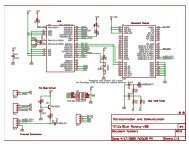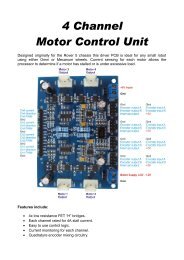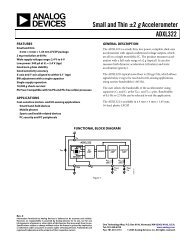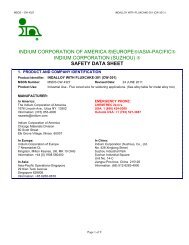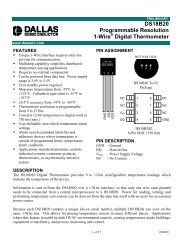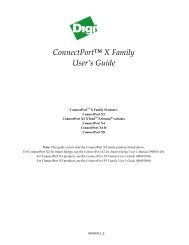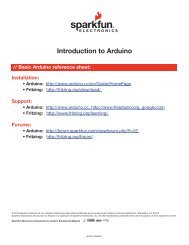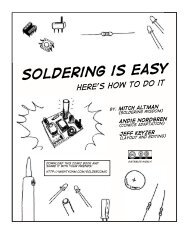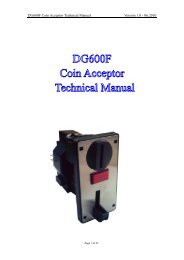SanDisk SD Card
SanDisk SD Card
SanDisk SD Card
You also want an ePaper? Increase the reach of your titles
YUMPU automatically turns print PDFs into web optimized ePapers that Google loves.
Host Design Considerations:Application NoteNAND MMC and <strong>SD</strong>-based Products Revision 1.0The maximum read and write time-out values for the MultiMedia<strong>Card</strong> and <strong>SD</strong> <strong>Card</strong> areshown in Table 1.Table 1.MultiMedia<strong>Card</strong> and <strong>SD</strong> <strong>Card</strong> Maximum Read/Write Time-out ValuesProductTime-out ValuesMultiMedia<strong>Card</strong> Typical MaximumRead (TAAC + NSAC) 10 * (TAAC + NSAC)Write (TAAC + NSAC) * R2W_FACTOR (TAAC) + NSAC) * R2W_FACTOR * 10<strong>SD</strong> <strong>Card</strong>Read (TAAC + NSAC) 100msWrite (TAAC + NSAC) * R2W_FACTOR 250 msThe factors used in calculating the values in Table 1—TAAC, NSAC, andR2W_FACTOR—can be read directly from the C<strong>SD</strong> register of the MultiMedia<strong>Card</strong> and<strong>SD</strong> <strong>Card</strong>.The TAAC factor’s unit is time, and the NSAC factor has units of 100 clocks. You canconvert TAAC units to clock cycles by multiplying by the frequency of the clock andcalculate the time-outs in units of clock cycles if desired. Alternatively, given thefrequency of the clock, you can convert the NSAC units to time and calculate the timeoutsin units of time.The R2W_FACTOR is a read-to-write factor and has no units. A design engineer can usethe time-out values derived from the C<strong>SD</strong> register to make the design compatible with allMultiMedia<strong>Card</strong>s and <strong>SD</strong> cards regardless of customer brand.InterfaceThe MultiMedia<strong>Card</strong> and <strong>SD</strong> <strong>Card</strong> support multiple busses. Both cards support the 1-bitSPI bus that includes bus pins DATin, DATout, CLK, and CS. The SPI bus is generallyfound on Motorola and other major MCU manufacturer products.The <strong>SD</strong> <strong>Card</strong> also supports a 4-bit and a 1-bit <strong>SD</strong> bi-directional bus mode. <strong>SD</strong> bus pinsare CLK, CMD, and DAT in 1-bit mode and CLK, CMD, and DAT[0:3] in 4-bit mode.The MultiMedia<strong>Card</strong> also supports the 1-bit bi-directional MMC bus mode that has CLK,CMD, and DAT bus pins. The CMD and DAT pins are bi-directional on the <strong>SD</strong> 1-bit, <strong>SD</strong>4-bit, and MMC 1-bit.The maximum burst rate achievable with the <strong>SD</strong> <strong>Card</strong> and MultiMedia<strong>Card</strong> depends onthe clock speed and bus mode. The burst rate is the data transfer rate between the card’sbuffer and host.© 2002 <strong>SanDisk</strong> Corporation 4 9/30/02, Lit# 80-11-00160



